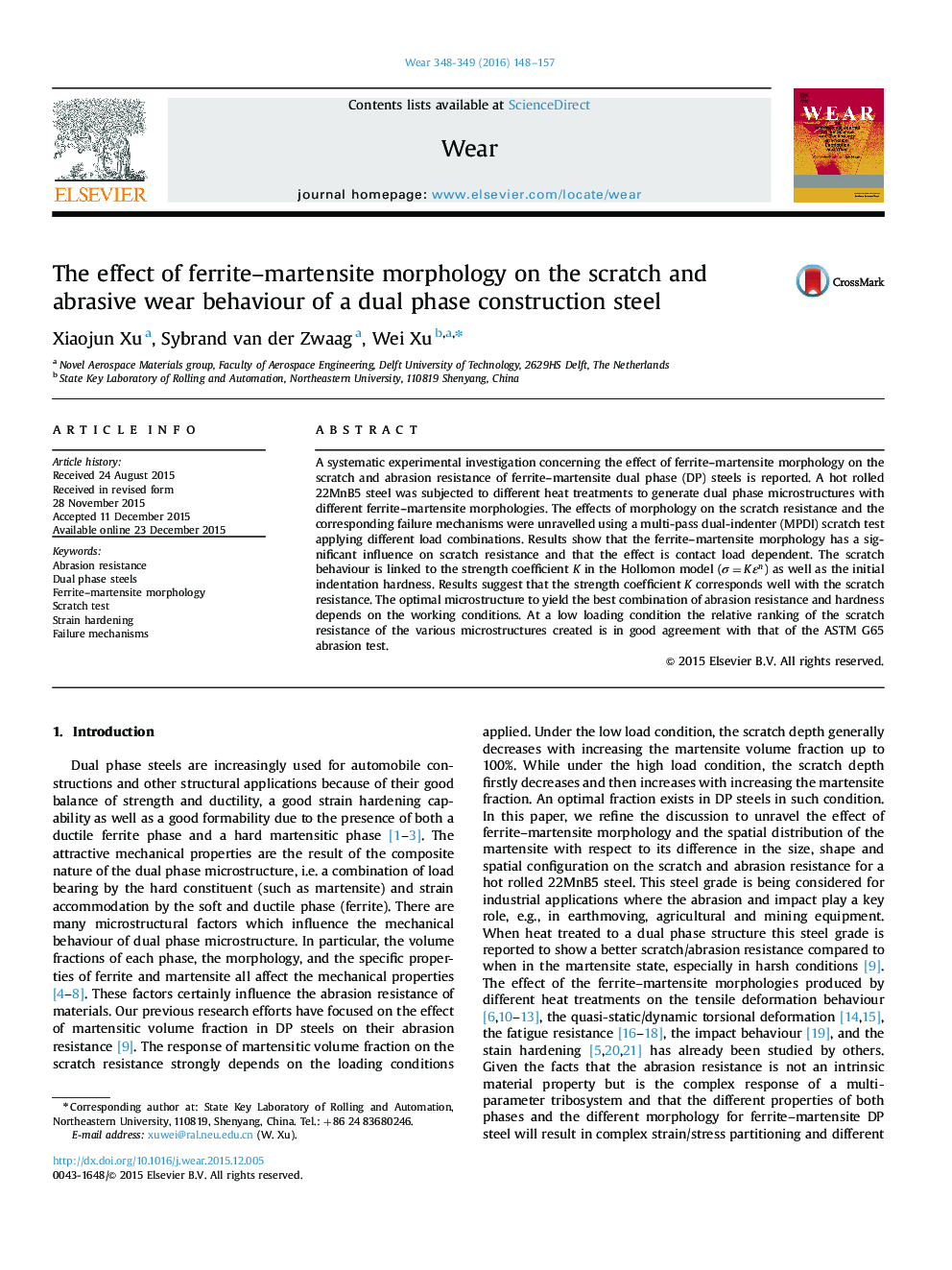| Article ID | Journal | Published Year | Pages | File Type |
|---|---|---|---|---|
| 616970 | Wear | 2016 | 10 Pages |
•The influence of morphology on scratch resistance is dependent on the load conditions.•At low loads the scratch depth is lowest for FIQ steels but highest for MIQ steels.•At high load DP steels of three morphology types show comparable levels of scratch resistance.•The scratch resistance was well correlated with the strength coefficient K.•The optimal low hardness abrasion resistant steel is AIQ steels at low load but is MIQ/AIQ steels at high load.
A systematic experimental investigation concerning the effect of ferrite–martensite morphology on the scratch and abrasion resistance of ferrite–martensite dual phase (DP) steels is reported. A hot rolled 22MnB5 steel was subjected to different heat treatments to generate dual phase microstructures with different ferrite–martensite morphologies. The effects of morphology on the scratch resistance and the corresponding failure mechanisms were unravelled using a multi-pass dual-indenter (MPDI) scratch test applying different load combinations. Results show that the ferrite–martensite morphology has a significant influence on scratch resistance and that the effect is contact load dependent. The scratch behaviour is linked to the strength coefficient K in the Hollomon model (σ=Kεnσ=Kεn) as well as the initial indentation hardness. Results suggest that the strength coefficient K corresponds well with the scratch resistance. The optimal microstructure to yield the best combination of abrasion resistance and hardness depends on the working conditions. At a low loading condition the relative ranking of the scratch resistance of the various microstructures created is in good agreement with that of the ASTM G65 abrasion test.
